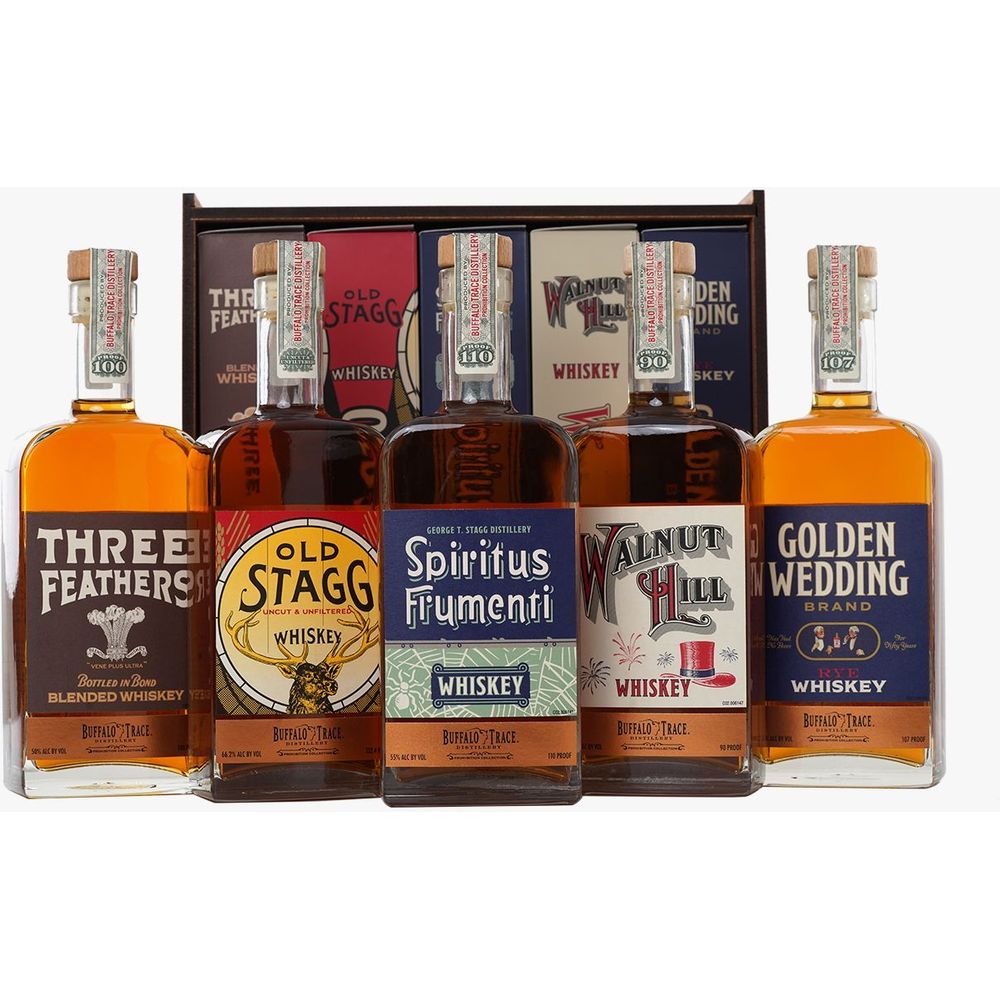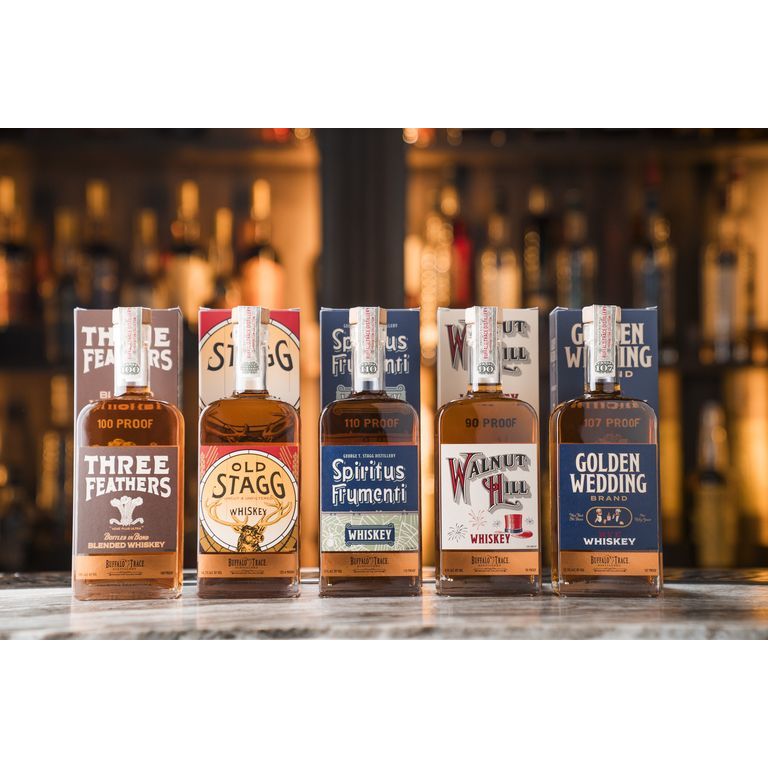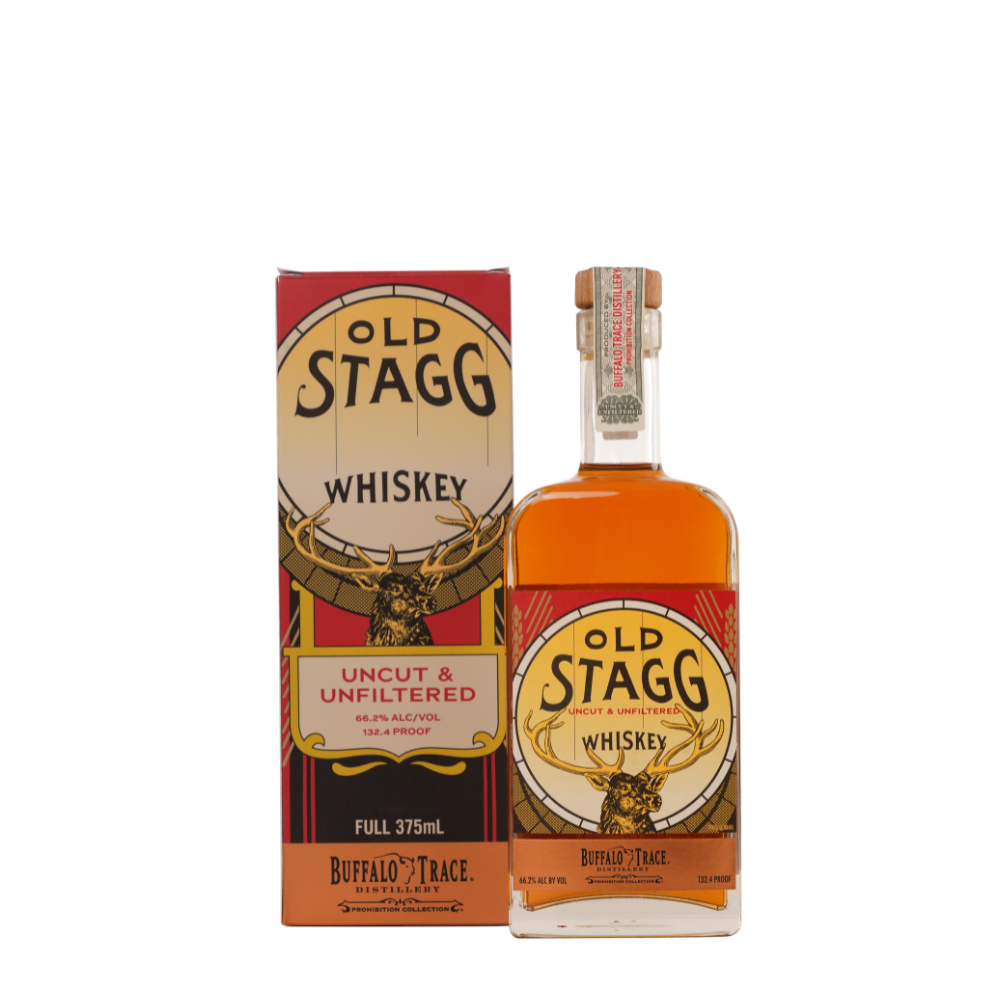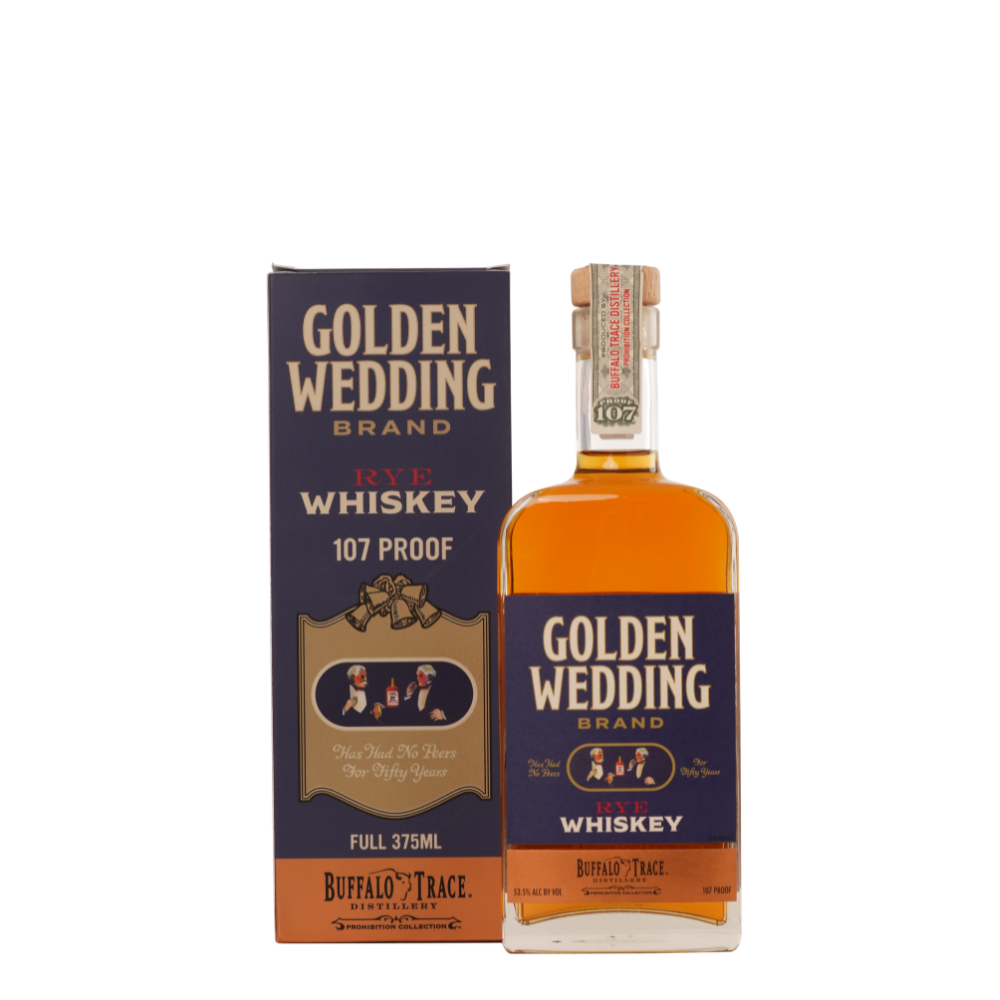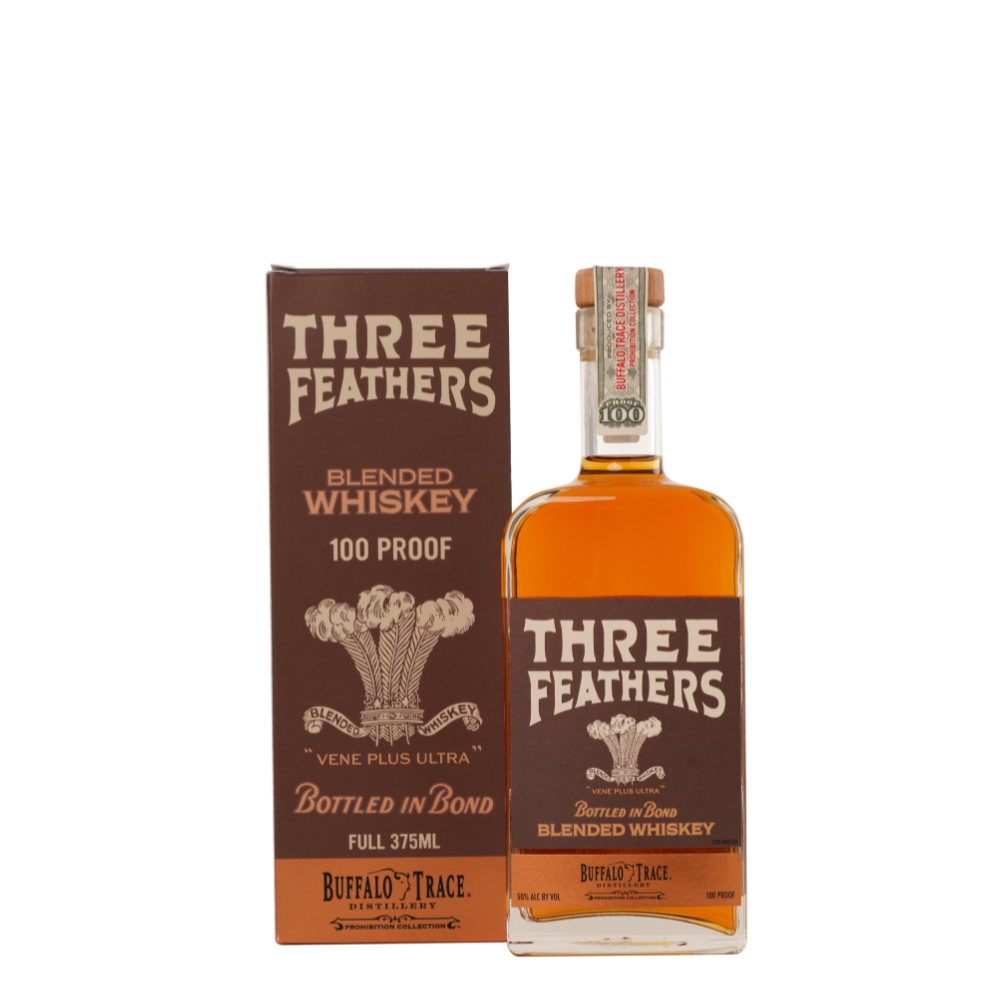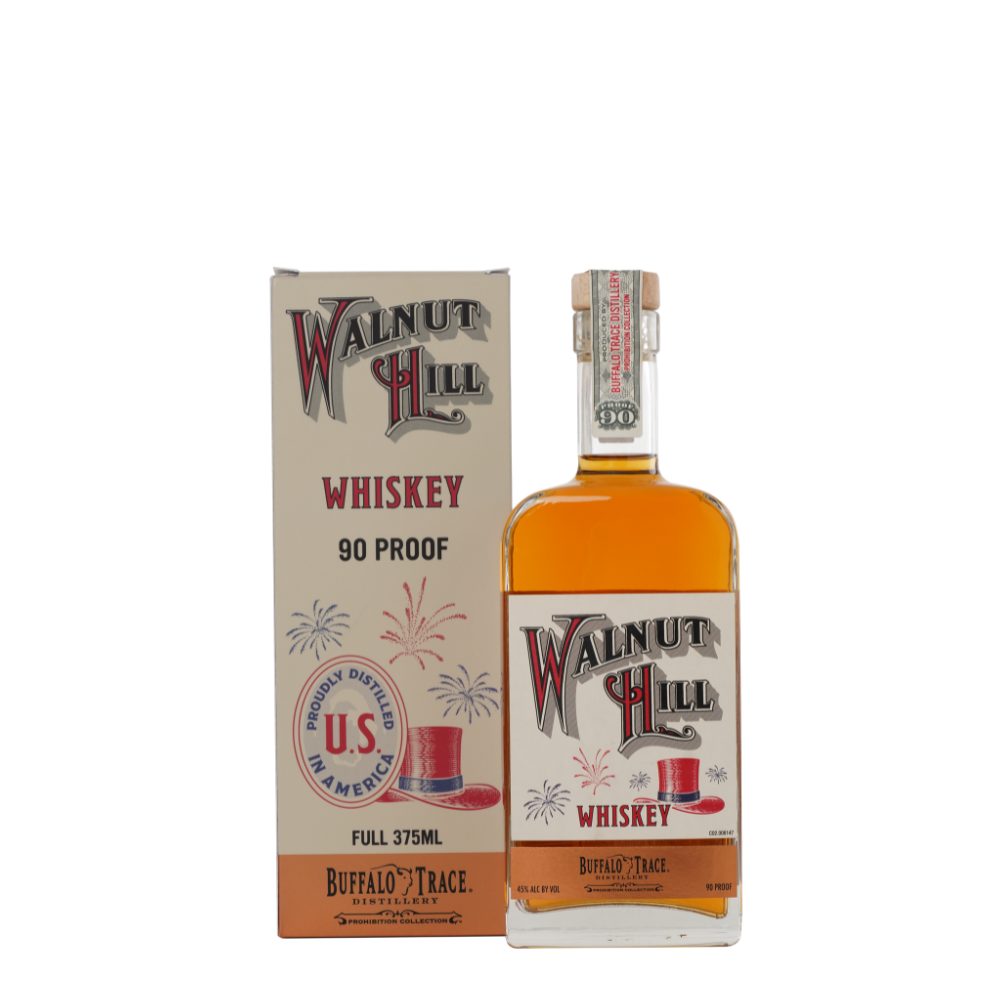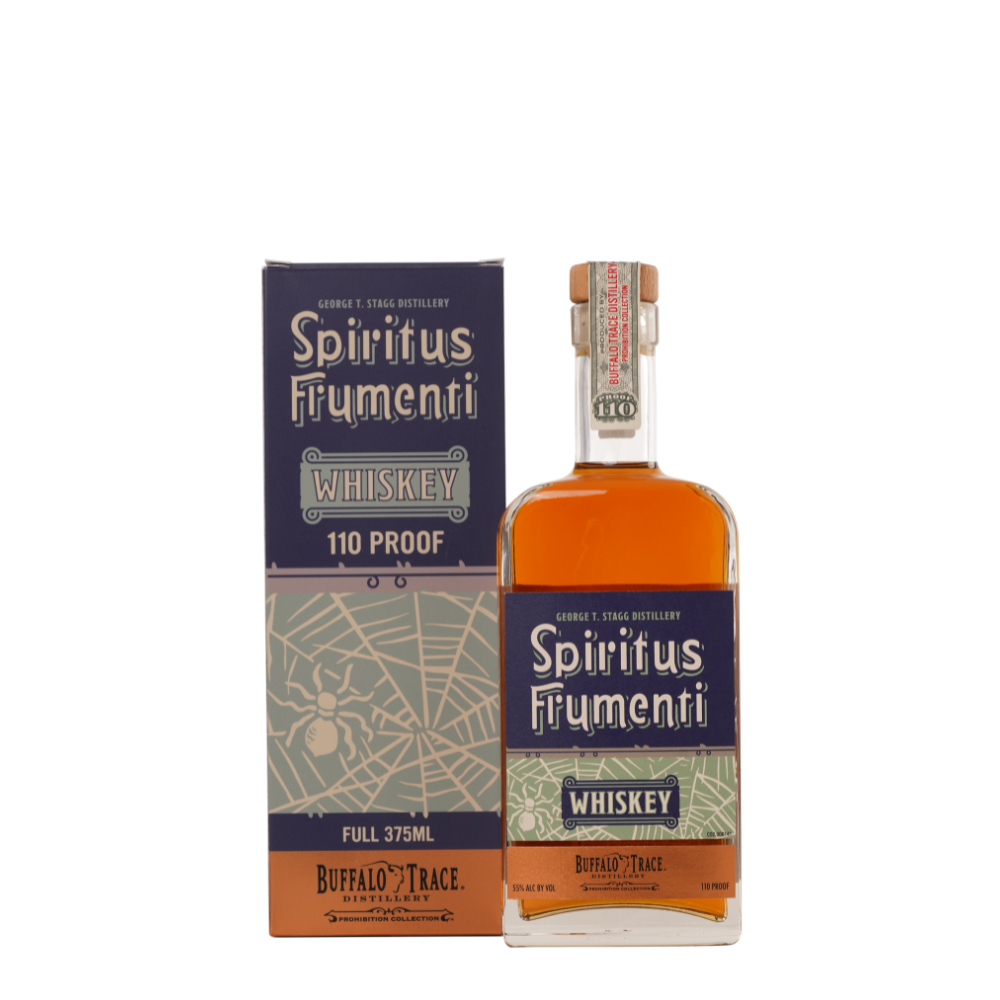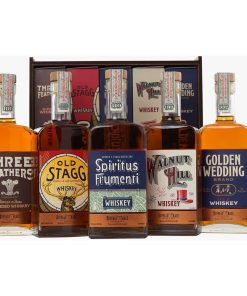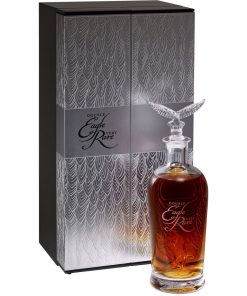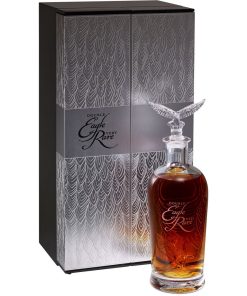Buffalo Trace Prohibition Collection 5x375ml Buffalo Trace
$ 3.499,99 $ 875,00
A five-bottle collection of whiskeys that honors the spirits legally produced at the distillery during Prohibition. The collection, set to launch in October, is a recreation of five Prohibition-era whiskeys that have, until now, been lost to time: Old Stagg, Golden Wedding, Three Features, Walnut Hill, and George T. Stagg Spiritus Frumenti.
From 1920 to 1933, the production, sale and transportation of alcohol was banned in the United States due to the ratification of the 18th amendment to the United States Constitution, an era known as Prohibition. Purchasing alcohol was only legal with a medical prescription. At the time, many doctors believed spirits to be a cure for a wide variety of ailments. As such, the U.S. Government granted licenses to six distilleries to bottle medicinal whiskey: one of those distilleries was the George T. Stagg Distillery in Frankfort, KY. Known today as Buffalo Trace Distillery, it is the longest continually-operating distillery in America.
Old Stagg
Originally distilled in honor of the distillery’s former owner, George T. Stagg, Old Stagg actually replaced O.F.C. Bourbon as the distillery’s flagship label. Bottled at barrel proof, uncut, and unfiltered, Old Stagg inspired other barrel-proof bourbon labels like Stagg and George T. Stagg. According to the brand, Old Stagg delivers aromas of oaky vanilla with a sweet, mellow palate of smooth vanilla and leather.
Golden Wedding
Bottled at 107 proof, Golden Wedding is a rye whiskey that dates back to 1869. Produced by Schenley Distilling at the Joseph S. Finch Distillery in Pennsylvania, Golden Wedding was physically bottled by both Schenley’s and the George T. Stagg Distillery in Frankfort, Ky. during Prohibition. By the 1940s, production of Golden Wedding had been moved to Canada, and by the 20th century, it would cease to exist — until now. The brand says spirit carries heavy rye spice on the nose with a grainy, herbal palate boasting dill pickle notes and a smokey finish with a hint of banana.
Three Feathers
Three Feathers’ roots stretch as far back as 1812 when it was initially advertised as a luxurious sipping rye, before it was transformed into a bonded whiskey and later a blended whiskey. Envisioned by Buffalo Trace master distiller Drew Mayville, the Prohibition Collection’s recreation of the historic whiskey is bottled-in-bond at 100 proof with vanilla and charred oak aromas, a tropical and stone fruit palate, and caramel and cocoa finish.
Walnut Hill
Distilled to 90 proof, Walnut Hill is a high-rye bourbon that the brand says conveys citrus aromas and a smokey, woodsy palate with sweet molasses. The spirit celebrates the bourbon of the same name that was produced at the distillery during Prohibition with oversight handled by Albert Blanton himself, the distillery’s then-president.
George T. Stagg Distillery Spiritus Frumenti
Coming in at 110 proof, George T. Stagg Distillery Spiritus Frumenti is the booziest of the Prohibition Collection’s offerings. Literally translating from Latin to “spirit of the grain,” Spiritus Frumenti was the generic name used to label medicinal whiskey during Prohibition. The brand says the wheated bourbon provides caramelized brown sugar aromas with a fruity, floral palate of cherry and oak with a vanilla and citrus finish.
Quick Shipping and Professional Packaging
We offer a broad range of shipping options thanks to our long-running partnerships with UPS, FedEx and DHL. Our warehouse staff are educated to pack your items exactly as per the specifications that we supply. Your items will undergo a thorough inspection and be securely secured prior to being shipped. We ship to thousands of customers each day from multiple countries. This is a sign of our determination to become the largest online retailer worldwide. Both Europe as well as the USA have distribution and warehouse centers.
Please note that orders with more than one item will be given a processing time according to the specific item.
Prior to shipping, our team will perform an exhaustive inspection of the items you purchased. Today, the majority orders will be shipped within 48 hours. The delivery time is estimated to be between three and seven days.
Returns
The stock is constantly changing and cannot be fully controlled by us due to the involvement of several different parties, such as the factory and our warehouse. The actual stock can change at any moment. Please be aware it's possible your order may become unfulfilled when you have placed the order.
Our policy is valid for a period of 30 days. If it's been more 30 days since you purchased your item and we're unable to offer you a full refund or exchange.
You are able to return an item when it's unopened and is in the same condition when you first received it. It must also be in the original packaging.
Related products
Whiskey
Whiskey
Bourbon
2023 Eagle Rare Double Eagle Very Rare 20 Year Old Kentucky Straight Bourbon Whiskey Eagle Rare
Whiskey
Whiskey
